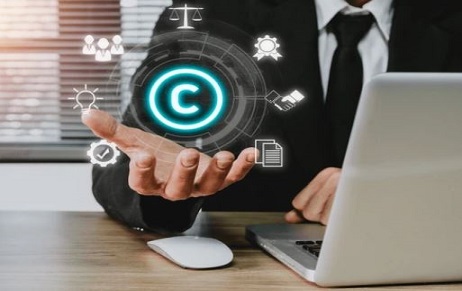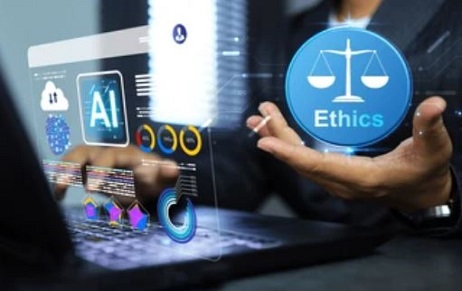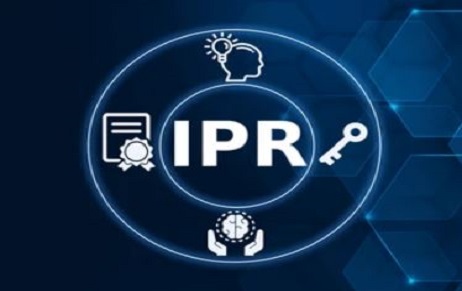“Bad Artists Steal, Good Artists Copy” This famous quote from Pablo Picasso defines what creativity…
Criminalizing online sharing of Academic Article by a Columbian Student
Background
Diego Gomez is a student perusing post-graduation in Conservation and Wildlife Management in Costa Rica. Like students of developing countries, he also used to face a lack of availability of literature in the libraries and other sources of reading. To face this scarcity of academic databases, Diego, used the power of the internet. It enabled him to read relevant research, share documents, and communicate with others in his field. In recent times, though a large amount of database is available on the internet yet to find something credible and scholarly, one has to pay a premium price and this served as a barrier for Gomez. So he, along with his fellow students started sharing articles which they find relevant amongst themselves on the internet. On being asked about giving due acknowledgment to the author, this is what Gomez has to say:
“The important thing is to make a correct citation, attributing researchers’ work by indicating their name and year of publication and, of course, not claiming the work of another researcher, but to recognize it and value it. Therefore, what we usually do is to reference the findings and make them available to those who need them.”
One such paper research paper was shared by Gomez on Scribd. The paper was a taxonomy document that could be used by conservationists like him to identify animals and study ways of preserving them and their ecosystems. It is noticeable that Columbia is the world’s second most biodiverse country and access to such prominent pieces of work could have served the scientific fraternity in the conservation of flora and fauna of the nation. Yet two years later, Gomez received a legal notice from the author of the impugned article intimating him about initiating criminal investigation against him in this regard. The notice was silent as to the reason and criminal charges for which Gomes was accused. Later on, he discovered that the author of the impugned article filed a lawsuit over the “violation of [his] economic and related rights.” This is what Gomes has to say on it:
“Three years ago, through a Facebook group in which I participated along with many others interested in the amphibian and reptile studies, I came across a master’s thesis that was crucial to identify some amphibians I found… At that time, however, I thought it was something that could be of interest [sic] for other groups, so I shared it on the web.
Although I was not the only one (the document was in several sites already), for sharing knowledge—recognizing the authorship—now the author advances a criminal case against me.”
Another relevant fact to the case was, later on, Scribd made the impugned article accessible for an amount of $5 which was initially freely accessible. Thus, it can be inferred that money was never a motive of Diego behind uploading the impugned article.
Diego now faces up to 8 years in jail and a monetary fine – for making available such scientifically important documents which could have easily served the purpose of conserving biodiversity in the second most biodiverse country of the world.
Fair Use Doctrine
In general, Fair Use is a safety filter incorporated with a view to maintaining a balance between rights to have access to information of the public at large without hampering the right to property of the copyright holder. This doctrine was firstly recognized by Britisher’s as a concept of “test copyright”. It was incorporated into the Copyright Act of 1976. In the US, copyright was originated with a view to elevate the “importance of scholarly access”. It was invented to “assist learning” but the instant case is an example of how this system failed to serve the purpose. In the words of renowned academician, De Vos,
“Fair use, a doctrine of U.S. law situated within copyright, is an influence within the institutional and political arrangements, the infrastructure that points to “the presence and operations of standards and classifications, which lean heavily on all writing practices”
Not in all cases, acknowledging the source of copyrighted information amounts to “taking permission” from the copyright holders. This is because there is no straight jacket framework to stipulate what exactly amounts to be permitted under the doctrine of Fair Use. Although it has been argued in lengths at several points in time, still it depends on particular facts and circumstances of the case. Some of the examples of activities that are taken under the doctrine by US courts are:
“quotation of excerpts in a review or criticism for purposes of illustration or comment; quotation of short passages in a scholarly or technical work, for illustration or clarification of the author’s observations; use in a parody of some of the content of the work parodied; summary of an address or article, with brief quotations, in a news report; reproduction by a library of a portion of a work to replace part of a damaged copy; reproduction by a teacher or student of a small part of a work to illustrate a lesson; reproduction of a work in legislative or judicial proceedings or reports; incidental and fortuitous reproduction, in a newsreel or broadcast, of a work located in the scene of an event being reported.”
Limitations and Exceptions for the use of copyright-protected work
Under US Copyright laws, this right is subject to certain limitations found in sections 107 through 118 of the copyright law. Section 107 contains a list of the various purposes for which the reproduction of a particular work may be considered fair, such as criticism, comment, news reporting, teaching, scholarship, and most importantly research. Diego can claim the doctrine of Fair Use if he can prove that he had borrowed the content for research purposes. In one of his statements, Diego inter-alia said, he wasn’t making a personal profit from sharing the impugned article—he simply intended for other scientists like him to be able to access and cite this scientific research. Section 107 also sets out four factors to be considered in determining whether or not a particular use is fair.
- The purpose and character of the use, including whether such use is of commercial nature or is for nonprofit educational purposes
- The nature of the copyrighted work
- The amount and substantiality of the portion used in relation to the copyrighted work as a whole
- The effect of the use upon the potential market for, or value of, the copyrighted work
The nature and purpose of use were clearly to share data amongst fellow learners and it was never intended to make any profit. The fact that Diego didn’t have any monetary agreement with Scribd further strengthens his argument.
Under Columbian Copyright Laws, the Fair use doctrine is very limited. Instead, it has a list of exceptions and limitations to the rights of authors. These exceptions are not compatible with new era digital situations and need to be urgently amended. Further, under Columbian Criminal Law, the necessary ingredients to held one criminally liable for such copyright infringement are men’s rea and antijurídica. Men’s rea is the intention or knowledge of wrongdoing that constitutes part of a crime. Certainly, in the instant case, this ingredient does not find any place as Diego never intended to harm the author. For that matter, the author also not known to him, and thus it is almost impossible to possess malice for some unknown person. Secondly antijurídica: which means whether there was actual harm against the economic rights of the author. As mentioned earlier, the impugned article was available free of cost on the internet. It was Scribd, who later on started charging money for it. Moreover, the act of Diego added economic value to the impugned article. It is evident from the fact that Scribd made the impugned article paid only after it has been shared by Diego which may be due to an increase in viewership of it. Thus, it can be inferred that Diego directly or indirectly, only added value to the article and in no way degraded or diminished its value.
In a landmark ruling, the Supreme Court of Colombia, the highest criminal judicial tribunal and Court of Cassation, ruled that, in order to establish criminal copyright infringement, it is necessary to ask whether the allegedly criminal conduct is profit-making, whether it causes effective injury and whether the intention is to cause harm on the right holder. Judicial interpretation of copyright issues is scarce and uncertain in Colombia. In this context, the Supreme Court’s Cassation ruling 29,188 (released on 30 April 2008) has set guidelines for “the development of national jurisprudence on the nature, scope, and meaning of the criminal protection of copyright.
Berne three-step test
As discussed earlier, the doctrine of fair use puts limitations on the exclusive rights of the copyright holders. It set forward certain exceptions and limitations which serves as an exception to Copyright infringement subjected to facts and circumstances of the case. There has been a long discussion on whether the copyright holders have unlimited exclusive rights to their work. On the contrary, a strong set of limitations and exceptions is deemed necessary to safeguard fundamental rights and freedoms of users, to regulate competition and industry practice, to promote the dissemination of information, and to alleviate the symptoms of market failure. In a nutshell, the test “sets limits to limitations on exclusive rights” and allows limitations
- “in certain special cases”
It requires that a limitation or exception in national legislation should be clearly defined and should be “narrow in its scope and reach” in a quantitative as well as a qualitative sense. That does not mean, however, that every situation to which the limitation could apply needs to be explicitly identified, provided that the scope of the limitation is known and particularized. In the instant case, these limitations may extend to throwing the impugned article in the public domain of learners. It may be taken as a precedent for other scholarly works that are far away from the reach of learners from ‘not so developed’ nations. In this way, such highly informative work may explicitly be coined under the head of “special cases” of Berne’s convention.
- “that does not conflict with the normal exploitation of the work”
It inter-alia means that the said limitation or exception in the national legislation is way higher than the normal level of exploitation of work and if such extent of exploitation is permitted will deprive the rightful copyright holder of significant or tangible commercial gains. It depends on what status does a country gives to its research and development. No doubt, an individual’s exclusive copyrights are subjected to protection but not at the cost of a nation’s development. In a way, an individual is a part of the state and hence the state’s development must be kept at a higher pedestal when it comes to research and development.
- “that do not unreasonably prejudice the legitimate interests of the author / right-holder”.
The terminologies in this step require high interpretation as they have not been explicitly defined elsewhere. It contains an important proportionality test in the way that the harm to the right-holders has to be reasonably related to the users’ benefits. In other words, prejudice has to be proportionate. It takes immense effort to make scholarly work worth informative and the individual interest cannot be ignored wholly. The possible way out can be that the state fixes a moderate price of such works which will serve both the state and the copyright holder.
Conclusion
Instant case epitomizes the darker side of the restrictions placed by the old and non-compatible laws on the exclusive economic rights of the authors. In my opinion, there is no justice in such laws if they criminalize the sharing of such scholarly research works. Gomez shared the impugned article with a view to foster the protection of the biodiversity of his country but to help others with similar ambitions to access the scholarly work. Learners of this kind are vast in the number who unintentionally fall into the complex cobwebs of prohibitive restraints of copyright. Penalizing and criminalizing healthy content sharing will lead to the formation of a large army of like-minded people aggrieved from such a bogus legal system. It is an imminent step to ensure that learners are not made criminals for promoting scientific progress and exercising their creative expression.
It is a well-accepted fact that it is highly difficult for students of developing countries to attain such informative scholarly work and hence, such sharing, in my opinion, should not be termed as offense as long as the copyright holder retains its moral rights. However, it won’t be totally non-expectable to hope for a law that does not criminalize such sharing of scholarly works done without malice or intention to draw personal benefits, especially when that work is actually being used for the development and application of scientific progress, which the prime objective of the copyright laws.
About the Author: Mr. Ananya Pratap Singh, an Intern at Khurana and Khurana, Advocates, and IP Attorneys.



